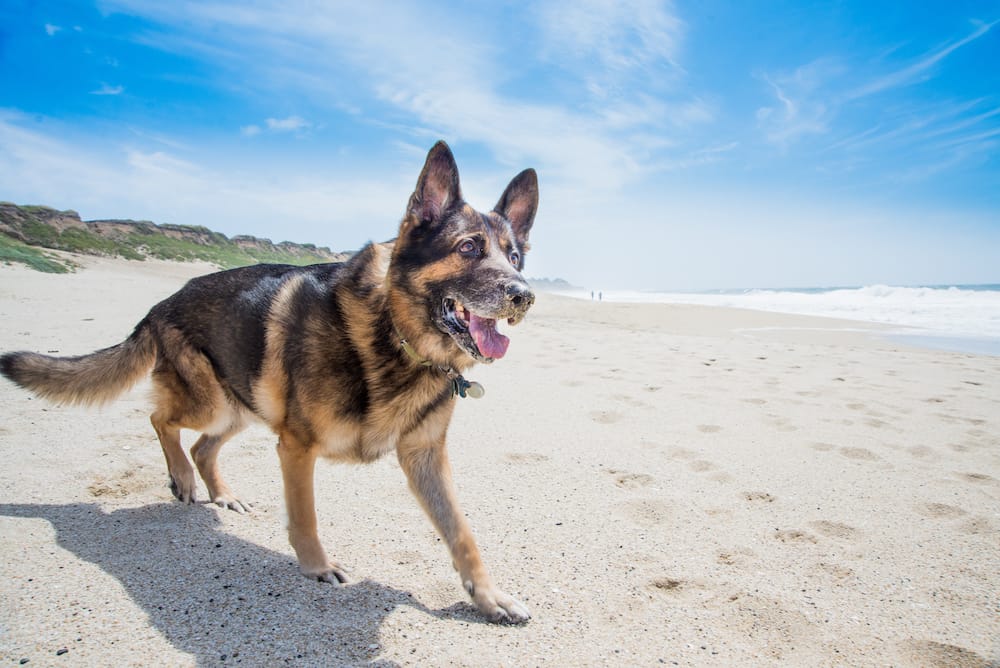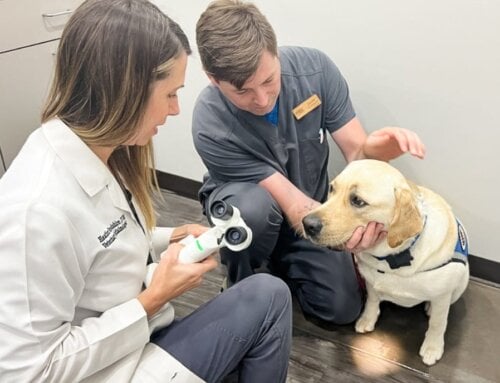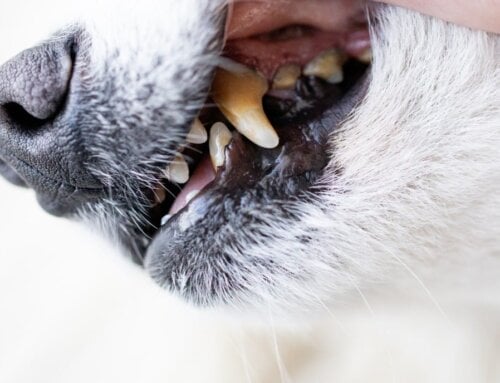With the arrival of the summer sun and increased UV exposure, we usually see an uptick in cases of pannus at our practice. Also known as chronic superficial keratitis, pannus is a progressive inflammatory autoimmune disease of the cornea. It is seen most commonly in German shepherds and related breeds, as well as in greyhounds and dachshunds. Symptoms include a white, red, or brown color change on the surface of the eye, consisting of infiltrates, blood vessels, and pigment accumulation in the cornea, usually starting at the outside edge of the normally clear cornea and extending inward. If left untreated, the condition can lead to scarring of the surface of the eye and may progress to severe visual impairment or blindness.
So what causes this condition and why do we see more cases in the summer? Ultraviolet radiation and elevated altitudes can increase the severity of the disease. Dogs living at high altitudes and very sunny areas are prone to the disease. When caught early, it is easily treated with corticosteroid therapy, administered by injections under the conjunctiva of the eye, or by topical eye drops and ointments. When caught late in the course of the disease, the inflammatory changes can be more difficult to reverse.
We surely get a lot of sun-filled days here in Hampton Roads, so do keep an eye out for pannus, especially if you have a predisposed breed. If your dog is showing symptoms, please give us a call at 757-749-4838.
















